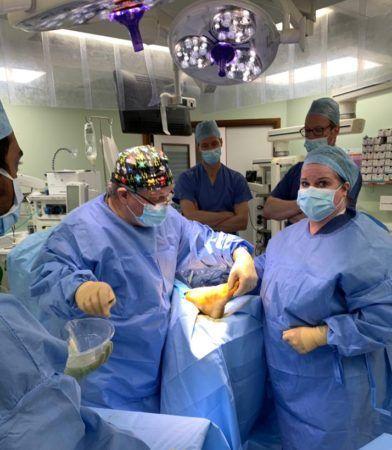With thoughts turning to incorporating the daily commute into at least some of our working week, and generally getting out and about more, we are going to have to get used to wearing our formal footwear that’s been gathering dust in the closet for over a year! For those that prefer to wear heels, remember if you’ve been wearing flats for a year your calf muscles won’t be used to the altered mechanics of walking with heels, so be more mindful about preventing foot and ankle injuries.
 Mr R. Lloyd Williams is a Consultant Orthopaedic Surgeon based in central London, specialising in foot and ankle disorders.
Mr R. Lloyd Williams is a Consultant Orthopaedic Surgeon based in central London, specialising in foot and ankle disorders.
In this article, Mr Lloyd Williams provides advice on what treatment is available to you, if you’re unlucky enough to sustain a foot or ankle injury.
Lloyd Williams says “Foot and ankle injuries account for over 20% of Emergency Department attendances. My advice is to tread carefully!” He goes on to say, “In my practice, I see patients with ankle trouble which often begins following an ankle sprain, a very common injury. Classically patients twist or invert their ankle, causing injury to the lateral ligaments found on the outside of the ankle.” Thankfully, most ankle sprains are simple and heal uneventfully. Mr Williams says, “Most ankle sprains can be managed with simple measures including protected weightbearing with crutches, rest, ice, elevation, and compression bandaging. Physiotherapy is also important to improve fine ankle control and balance. Most people should be feeling confident again by 6 to 12 weeks.”

Mr Lloyd Williams at work (in the colourful hat!)
Not everyone, however, makes a full recovery and patients should know when to seek advice to rule out a more serious injury, such as a fracture. Mr Williams points out that, “If patients have severe pain, are unable to weight-bear after the injury, or have bony tenderness, it is quite possible that there is a more complicated injury rather than just an ankle sprain. For such patients, I would recommend an X-ray to rule out a fracture.” There can be longer term problems too. “In up to 20% of cases, patients can develop long term instability and recurrent giving-way of the ankle. In my hands, if conservative measures have failed, surgical reconstruction of the lateral ligaments is necessary, also known as a Brostrom-Gould procedure. This is a particularly reliable operation, with 95% of patients regaining stability and trust in their ankle, allowing a return to sport.”
Long term pain in the foot following a sprain, is another symptom that should not be ignored. Ankle impingement occurs when the ruptured ankle ligament heals with lots of thickening, sometimes folding in and getting pinched in the joint. An ultrasound guided steroid injection into the painful area can settle the symptoms. However, for persistent impingement symptoms, an ankle arthroscopy may be necessary. Deep ankle pain following a sprain is worrying and may indicate damage to the specialised cartilage inside the ankle joint. “At the time of the ankle sprain, the specialised articular cartilage that lines the joints can be damaged. Arthroscopic surgery is a powerful tool I can use where necessary to perform microfracture – a process where the bone marrow is stimulated to form new cartilage.”










